Outforia Quicktake: Key Takeaways
- Tsunamis are large, long waves caused by displacements in the ocean or other bodies of water.
- Common triggers include earthquakes, volcanic activity, landslides, and specific weather conditions.
- Tsunami waves can reach extreme speeds of up to 500 mph (805 kph) and travel through the entire water column.
- Most tsunamis occur in the Pacific Ocean, particularly in the Ring of Fire area.
- Large tsunamis can cause catastrophic damage, including the destruction of buildings, infrastructure, and loss of life.
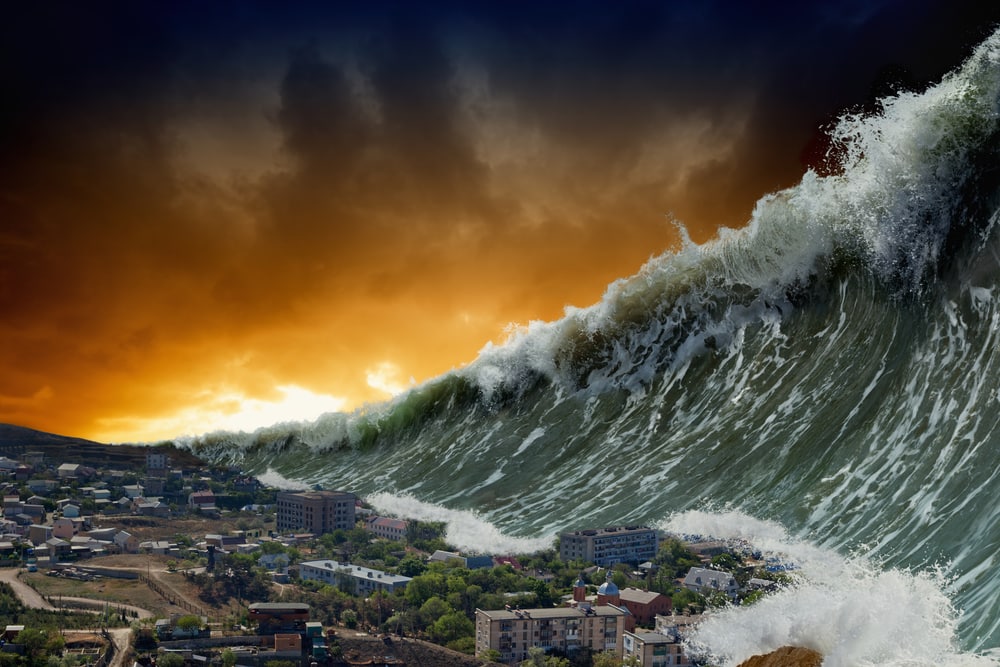
Tsunamis are natural disasters that form as a result of a disturbance in the ocean or other bodies of water. There are several things that may trigger a tsunami, including earthquakes, volcanic activity, landslides, and certain weather conditions.
Unlike regular ocean waves, tsunamis need a trigger to form. Many tsunamis have a low intensity level, but some can be very large and catastrophic.
You May Also Like: What Are The Chances Of Getting Struck By Lightning?
What is a Tsunami?

A tsunami is defined as a series of large, long waves that form as a result of displacement in the ocean. A force that causes the water to be displaced creates waves that travel away from the source.
Regular ocean waves are created by wind. These are called wind waves. Wind speeds only affect the ocean’s surface.
Wind waves are much smaller and less intense than tsunami waves. When you visit the beach and enjoy swimming or surfing, you encounter wind waves.
A tsunami wave can reach extreme speeds upwards of 500 mph (805 kph). Large tsunami waves reach peak speed farther out in the ocean. As a tsunami travels closer to shore, its speed decreases to about 20-30 mph (32-48 kph).
Ocean currents and wave heights typically increase as tsunamis approach coastal shorelines.
Wind waves only move the ocean’s surface, but tsunami waves move throughout the entire water column. Tsunamis that travel in the deep sea are faster than those that form in shallower areas.
The wavelength of a tsunami typically ranges between 60-300 miles (96.5-483 km).
For comparison, wind waves typically have a wavelength of 300-600 ft (91-183 m). A single tsunami wave may last anywhere between 5 minutes to 2 hours. Wind waves typically only last for 5-10 seconds.
What Causes a Tsunami?

Earthquakes are the most common cause of tsunamis. Other factors that can cause a tsunami include:
- Volcanic activity
- Certain weather conditions
- Landslides
- Near-Earth objects like asteroids or comets
Tsunamis caused by earthquakes typically form near tectonic plate boundaries. As tectonic plates converge, this can trigger an earthquake.
The Ring of Fire is an area in the Pacific Ocean known for high volumes of volcanic and seismic activity, or earthquakes. Most tsunamis occur in the Pacific Ocean as a result. However, tsunamis can form anywhere around the world.
Certain atmospheric conditions that create significant changes in air pressure can also trigger tsunamis.
Landslides that cause large amounts of debris and rock to fall into a body of water can cause a disturbance and form a tsunami.
Although extremely rare, asteroids or other objects from space that hit the Earth can trigger a tsunami. The asteroid believed to have wiped out all of the dinosaurs on Earth 66 million years ago caused a megatsunami to form.
How Do Tsunamis Form?
Tsunamis form when a force causes a displacement in the ocean or another body of water. Although tsunamis mainly occur in oceans, they can also occur in bays, lakes, and similar bodies of water.
If an earthquake causes a tsunami, the water above the source of the earthquake is displaced.
Tsunamis always form outwards from the source. If a landslide causes a tsunami, the point in the ocean or body of water where the debris falls into the water is the source.
If you take a rock and throw it into a still body of water, you’ll notice it causes ripples to move away from the area where the rock dropped. Tsunamis form in a similar way. The water moves away from the source in all directions.
Boats in the water near the source may not feel the effects of the tsunami. Large tsunamis build up more speed and become observable from the coast as they approach the shore.
Although tsunamis are commonly depicted as towering waves, many tsunami waves don’t reach such extreme heights.
Large tsunami waves are only seen in extreme events. Strong surges, rising sea level, and floating debris are the most dangerous effects of most tsunamis.
Where Do Tsunamis Occur?

Tsunamis can happen anywhere around the world, but they’re more common in certain regions.
According to the National Oceanic and Atmospheric Administration (NOAA), these areas in the US have high to very high tsunami hazard levels:
- US West Coast
- Southern coast of Alaska
- Hawaii
These areas are more likely to have tsunamis because they’re bordered by the Pacific.
Due to the heightened levels of seismic activity in the Ring of Fire, tsunamis are most common in this region.
The Ring of Fire encompasses the western coasts of the US from southern Alaska south to Central and South America. It also includes the Aleutian Islands in Alaska south to Japan, the Philippines, and Australia.
About 78% of confirmed tsunami events have occurred in the Pacific Ocean. The Atlantic Ocean and Caribbean Sea make up 9% of confirmed tsunami events.
The Mediterranean Sea, Indian Ocean, and other seas make up the remaining 12% of tsunami events. Japan, Russia, and Indonesia have the highest percentage of definite tsunami events recorded.
Since most tsunamis occur in the Pacific, tsunamis are uncommon along the Atlantic and Gulf Coast of the US.
Effects of Tsunamis
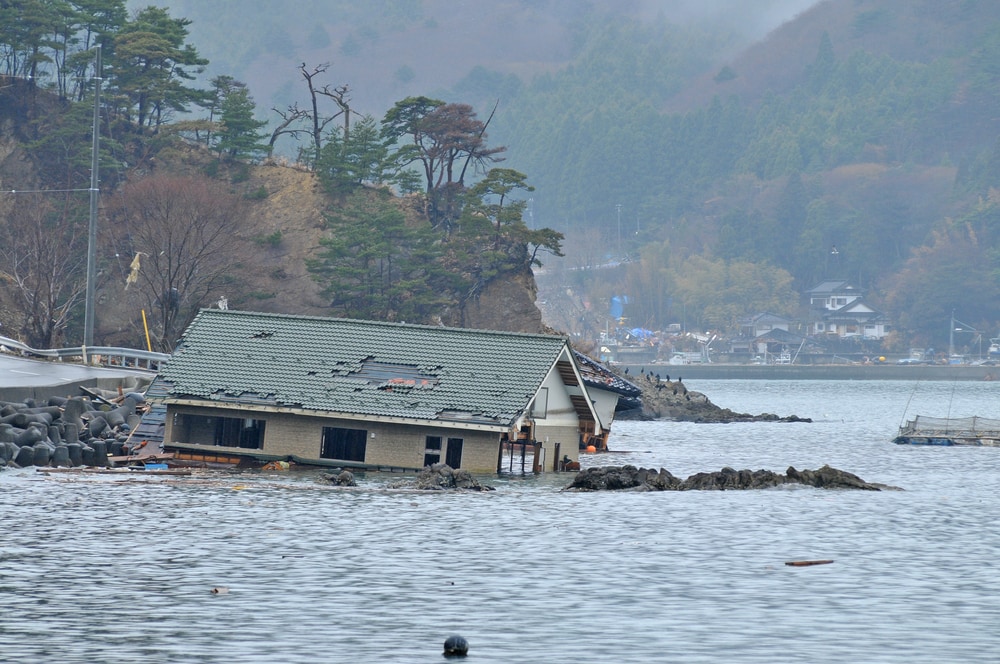
Small tsunamis may cause little to no damage to coastal communities. However, large tsunamis can have catastrophic effects.
There are several ways a tsunami can impact an area. These natural disasters have the ability to wash away buildings, debris, and people. It can also cause oil spills, which can lead to fires.
Tsunamis are divided into two main categories, including local and distant. Local tsunamis are considered more dangerous because there’s less time to prepare for impact.
Distant tsunamis form farther from the coast. This allows more time for tsunami warnings to reach potentially affected communities.
There are three types of tsunami messages that people may receive when tsunamis are possible, including:
- Tsunami Watch – Issued when a tsunami may form and impact a coastal area.
- Tsunami Advisory – Alerts potentially affected communities that strong currents and dangerous waves are likely or expected.
- Tsunami Warning – Issued when a tsunami is imminent or occurring.
Despite common depictions of tsunamis, most tsunami waves are less than 10 ft (3 m) high. Small tsunami waves can still be very dangerous and destructive.
In some cases, tsunamis can cause flooding more than a mile inland. Turbulent water can also be dangerous as it can carry people and debris away. Just 6 inches (15 cm) of flowing water is enough to sweep you off your feet.
Severe damage to infrastructure and communication lines can isolate communities for days or weeks depending on the severity.
Tsunami Intensity Scale
Tsunamis have their own intensity scale. These natural disasters are measured using a 12-grade intensity scale system.
Tsunami intensity level factors in the damaging effects of a tsunami, including infrastructure damage, vessel damage, and its effect on humans.
The 12 levels of tsunami intensity ranging from 1 (Not Felt) to 12 (Completely Devastating). The weakest tsunamis are usually not felt and don’t result in any damage.
Weak tsunamis are a Grade 3, which may be observed by some people on the coast.
However, little to no damage occurs on the coast. Tsunamis that cause people to retreat to higher ground and cause damage to wooden structures are classified as Grade 7 “Damaging” tsunamis.
Grades 10-12 include “Very Destructive”, “Devastating”, and “Completely Devastating”. Grade 12 tsunamis are capable of destroying almost all wooden and masonry buildings in the affected area.
If a tsunami is caused by an earthquake, the magnitude of the earthquake may affect the severity of a tsunami event.
You May Also Like: What Is An Avalanche? Discover The Types, Causes, And Dangers Of These Snowy Disasters
Historical Tsunamis
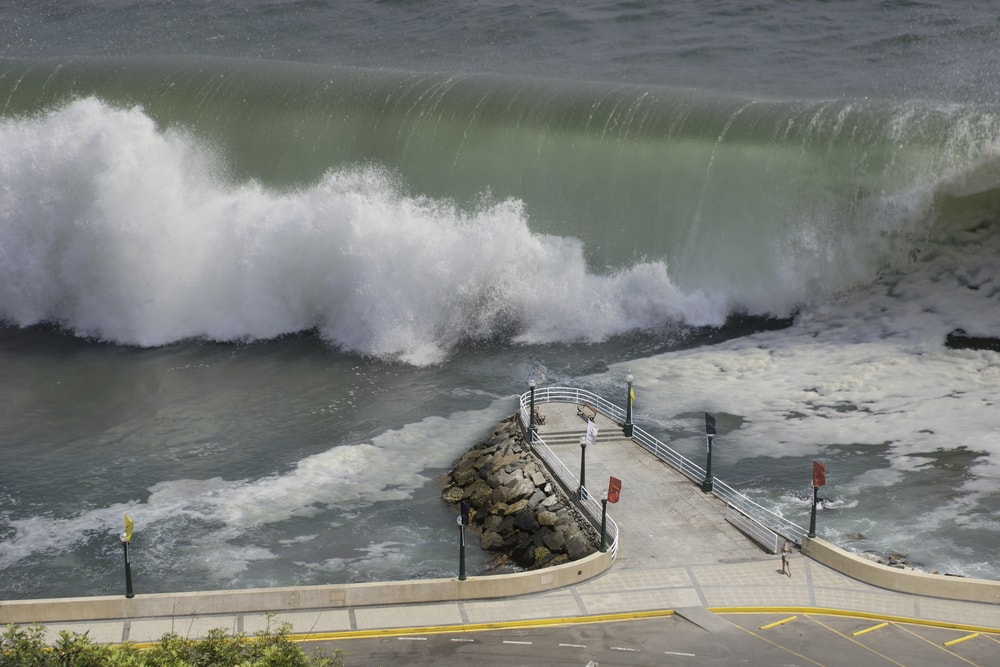
Some of the most historical tsunamis have caused tens to hundreds of thousands of deaths and millions to billions of dollars in damage. These are some of the largest or most catastrophic tsunami events.
1958 Tsunami in Southeast Alaska
One of the biggest tsunami waves in history occurred in Lituya Bay in southeast Alaska. The tsunami was triggered by an intense 7.8 magnitude earthquake in July 1958. The wave reached a maximum height of 1,721 ft (524.6 m).
The earthquake caused a rockslide. About 90 million tons of rock fell into the bay, creating a tsunami.
The tsunami caused five deaths. Three of the deaths were caused by subsidence and two individuals died from the tsunami while on a boat in the bay.
2004 Indian Ocean Tsunami

One of the most catastrophic tsunamis occurred in the Indian Ocean off the coast of North Sumatra, Indonesia in December 2004.
The tsunami formed as a result of a 9.1 magnitude earthquake. It displaced the water located along the India and Burma tectonic plates.
At least 227,898 people died or went missing due to the tsunami. It caused almost $10 billion in damage and displaced more than one million people. Indonesia experienced the highest death toll, but several other countries were also affected.
The tsunami led to major advancements in tsunami preparedness, detection, and forecasting.
2010 Haiti and Dominican Republic Tsunami
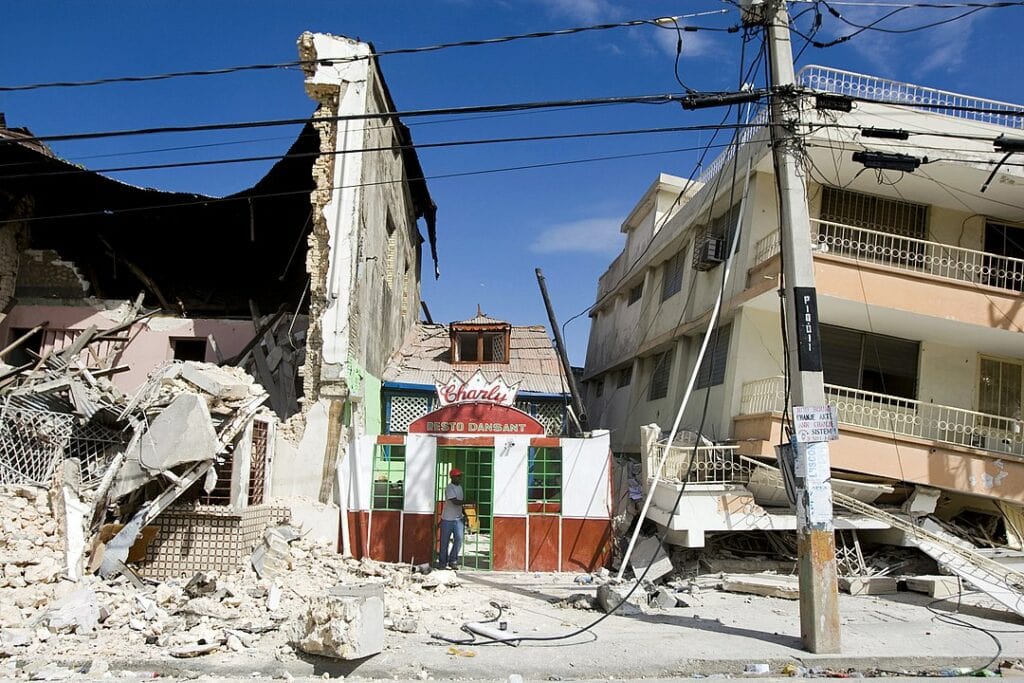
A 7 magnitude earthquake caused a tsunami to form in January 2010 and affected the island of Hispaniola. The earthquake and tsunami caused at least 316,000 deaths and an additional 300,000 injuries.
Almost 100,000 houses were destroyed and even more were damaged. The maximum wave height of the tsunami was 10.5 ft (3.21 m). Haiti was most affected by the earthquake and tsunami.
Along with the destruction of infrastructure, the earthquake and tsunami also caused loss of communication and road blockages from debris.
2023 Gulf of Iskenderun Tsunami
One of the most recent tsunamis took place in February 2023 in southern Turkey. The tsunami was triggered by a 7.8 magnitude earthquake, with several aftershocks following.
The tsunami formed and reached the coast near Iskenderun about 25 minutes after the earthquake occurred.
The maximum wave height of the tsunami was 25 cm. Despite the relatively short height, the tsunami caused 51,882 deaths and 119,200 injuries. More than 100,000 homes were destroyed. The total cost of damage was about $39.3 million.
The formation of a tsunami in this area was an odd occurrence. Many tsunamis form as a result of subduction zone earthquakes. However, this earthquake didn’t occur in a subduction zone.
You May Also Like: What Is A Tornado? A Fascinating Look At The Science And Impact Of Tornadoes
How do tsunamis form FAQs
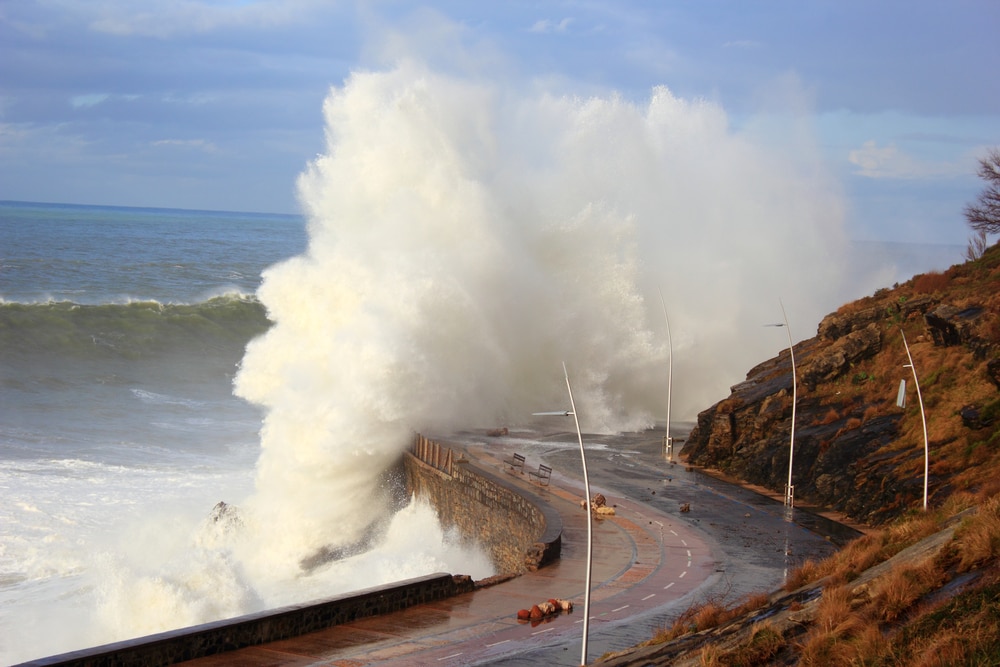
What was the biggest tsunami in history?
The 1958 southeastern Alaska tsunami in Lituya Bay is the biggest tsunami wave recorded in history as of 2023. The massive wave reached a little over 1,700 ft (518 m).
After an earthquake caused a rockslide, the millions of tons of rock that fell into the bay caused the tsunami to form. Although it was the biggest tsunami wave recorded, it wasn’t the deadliest.
Can tsunamis be predicted?
Unlike hurricanes or cyclones, tsunamis can’t really be predicted. Some tsunamis form quickly after the event that caused them. Tsunamis form as a result of something displacing water.
Earthquakes are the most common cause for water displacement because they release energy along fault lines. Earthquakes can lead to landslides or other events that may contribute to tsunami formation.
Tsunami warnings may be issued when an event that can cause a tsunami occurs. Warnings may be issued in time for people to find high ground, but some tsunamis form too quickly.
How long does a tsunami last?
Tsunamis can last for a few minutes or several hours depending on the size. Massive tsunamis may last for days. The first wave in a tsunami may not be the last or the largest to come.
Some tsunamis may reach their peak strength a few hours after the initial wave and then decrease in size and strength.









